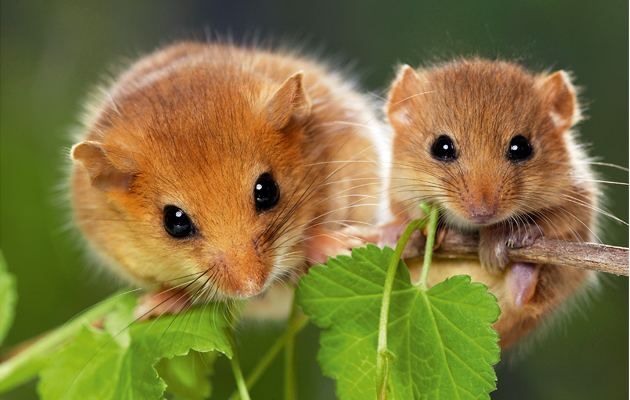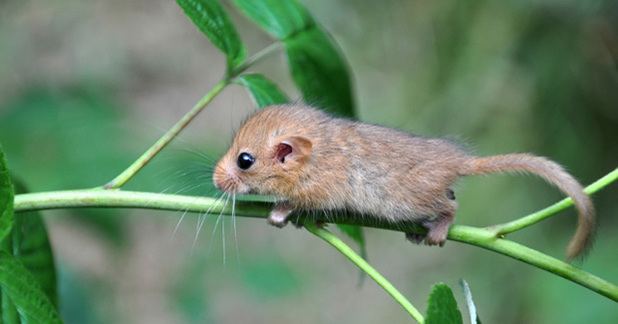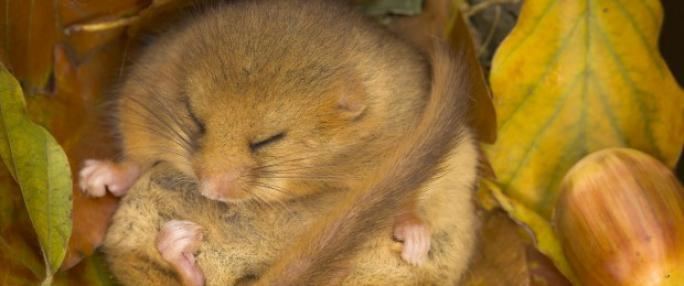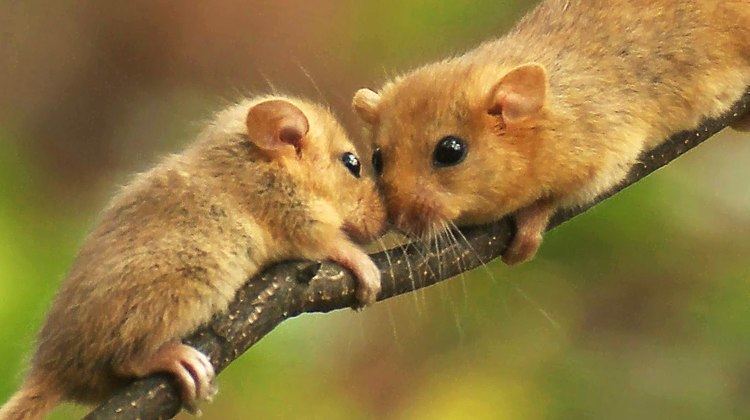Scientific name Muscardinus avellanarius Rank Species | Phylum Chordata Family Gliridae Genus MuscardinusKaup, 1829 Higher classification Muscardinus | |
 | ||
Similar | ||
Captive hazel dormouse up close
The hazel dormouse or common dormouse (Muscardinus avellanarius) is a small mammal and the only living species in the genus Muscardinus. It is 6 to 9 cm (2.4 to 3.5 in) long with a tail of 5.7 to 7.5 cm (2.2 to 3.0 in). It weighs 17 to 20 g (0.60 to 0.71 oz), although this increases to 30 to 40 grams (1.1 to 1.4 oz) just before hibernation. The hazel dormouse hibernates from October to April–May.
Contents
- Captive hazel dormouse up close
- Description
- Distribution and habitat
- Habitat
- Protection status
- Behaviour
- Diet
- Plants of value to dormice
- Threats
- References

Description

The hazel dormouse has golden-brown fur and large, black eyes. It is a nocturnal creature and spends most of its waking hours among the branches of trees looking for food. It will make long detours rather than come down to the ground and expose itself to danger.
Distribution and habitat

The hazel dormouse is native to northern Europe and Asia Minor. It is the only dormouse native to the British Isles, and is therefore often referred to simply as the "dormouse" in British sources, although the edible dormouse, Glis glis, has been accidentally introduced and now has an established population. Though Ireland has no native dormouse, the hazel dormouse has recently been found in County Kildare, and appears to be spreading rapidly, helped by the prevalence of hedgerows in the Irish countryside. The first record of the dormouse in Ireland was noted in Co. Kildare in 2010.

The United Kingdom distribution of the hazel dormouse can be found on the National Biodivestity Network website. A 2016 study finds that hazel dormice in Britain have declined by over one third since 2000. Woodland habitat loss and management and a warming climate are seen as material threats to their future status.
Habitat

Protection status
The hazel dormouse is protected in the UK under the Wildlife and Countryside Act.
Behaviour
In winter (October to November), the hazel dormouse will hibernate in nests on the ground, in the base of old coppiced trees or hazel stools, under piles of leaves or under log piles as these situations are not subject to extreme variations in either temperature or humidity. Dormice are almost completely arboreal in habit but much less reluctant to cross open ground than was thought even recently. When it wakes up in spring (late April or early May), it builds woven nests of shredded honeysuckle bark, fresh leaves and grasses in the undergrowth. If the weather is cold and wet, and food scarce, it saves energy by going into torpor; it curls up into a ball and goes to sleep. The hazel dormouse, therefore, spends a large proportion of its life sleeping − either hibernating in winter or in torpor in summer.
Examination of hazelnuts may show a neat, round hole in the shell. This indicates it has been opened by a small rodent, e.g., the dormouse, wood mouse, or bank vole. Other animals, such as squirrels or jays, will either split the shell completely in half or make a jagged hole in it.
Further examination reveals the cut surface of the hole has toothmarks which follow the direction of the shell. In addition, there will be toothmarks on the outer surface of the nut, at an angle of about 45 degrees to the cut surface. Woodmice and voles bite across the nutshell leaving clear parallel toothmarks from inside to outside. Woodmice also leave toothmarks on the outer surface of the nut but voles do not.
Diet
The hazel dormouse requires a variety of arboreal foods to survive. It eats berries and nuts and other fruit with hazelnuts being the main food for fattening up before hibernation. The dormouse also eats hornbeam and blackthorn fruit where hazel is scarce. Other food sources are the buds of young leaves, and flowers which provide nectar and pollen. The dormouse also eats insects found on food-source trees, particularly aphids and caterpillars.
